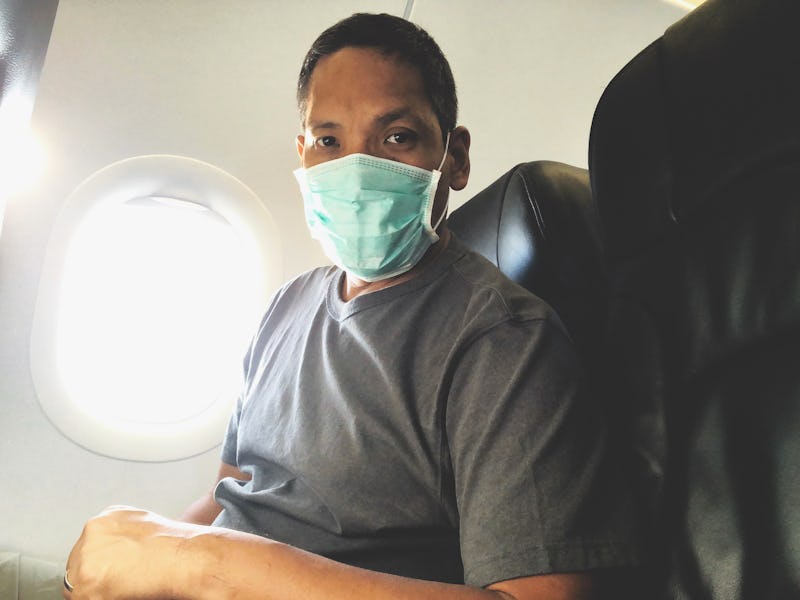If you're concerned about germs on an airplane, there's good news

Qantas has unveiled a range of precautions to guard passengers against Covid-19. The safety measures expected to be rolled out on June 12 include contactless check-in, hand sanitizer at departure gates, and optional masks and sanitizing wipes on board.
Controversially, however, there will be no physical distancing on board, because Qantas claims it is too expensive to run half-empty flights.
The Covid-19 pandemic is forcing airlines to look closely at their hygiene practices. But aircraft cabins were havens for germs long before the coronavirus came along. The good news is there are some simple ways on-board hygiene can be improved.
Common sense precautions — As an environmental microbiologist, I have observed, in general, a gradual loss of quality in hygiene globally.
Airports and aircraft have crammed ever-larger numbers of passengers into ever smaller economy-class seats.
Although social distancing can’t do much in a confined cabin space – as the virus is reported to be able to travel eight meters — wearing face masks (viral ones in particular) and practicing hand hygiene remain crucial.
Since microorganisms are invisible, it is hard to combat such a powerful enemy. During flights, I have observed a vast array of unwitting mistakes made by flight crew and passengers.
Some crew staff would go to the bathroom to push overflowing paper towels down into the bins, exit without washing their hands, and continue to serve food and drinks.
We have the technology for manufacturers to install waste bins where paper towels can be shredded, disinfected, and disposed of via suction, as is used in the toilets. Moreover, all aircraft waste bins should operate with pedals to prevent hand contamination.
Also, pilots should not share bathrooms with passengers, as is often the case. Imagine the consequences if pilots became infected and severely ill during a long flight, to the point of not being able to fly. Who would land the plane?
For instance, the highly transmissible norovirus, which causes vomiting and diarrhea, can manifest within 12 hours of exposure. So for everyone’s safety, pilots should have their own bathroom.
Food and the kitchen — Aircraft kitchen areas should be as far as possible from toilets.
Male and female toilets should be separated because, due to the way men and women use the bathroom, male bathrooms are more likely to have droplets of urine splash outside the toilet bowl. Child toilets and change rooms should be separate as well.
Food trolleys should be covered with a sterile plastic sheet during service as they come close to seated passengers who could be infected.
And to allow traffic flow in the corridor, trolleys should not be placed near toilets. At times I have seen bread rolls in a basket with a nice white napkin, with the napkin touching the toilet door.
Also, blankets should not be used if the bags have been opened, and pillows should have their own sterile bags.
Mind your luggage — In March, luggage handlers were infected with Covid-19 at Adelaide Airport.
As a passenger, you should avoid placing your hand luggage on the seats while reaching into overhead lockers. There’s a chance your luggage was placed on a contaminated surface before you entered the plane, such as on a public bathroom floor.
Be wary of using the seat pocket in front of you. Previous passengers may have placed dirty (or infected) tissues there. So keep this in mind when using one to hold items such as your passport, or glasses, which come close to your eyes (through which SARS-CoV-2 can enter the body).
Also, safety cards in seat pockets should be disposable and should be replaced after each flight.
In facing the Covid-19 crisis, it’s important to remember that unless an antiviral drug or a vaccine is found, this virus could come back every year.
On many occasions, microbiologists have warned of the need for more microbiology literacy among the public. Yet, too often their calls are dismissed as paranoia or being overly cautious.
But now’s the time to listen, and to start taking precautions. For all we know, there may be even more dangerous superbugs breeding around us – ones we’ve simply yet to encounter.
This article was originally published on The Conversation by Ipek Kurtböke at the University of the Sunshine Coast. Read the original article here.